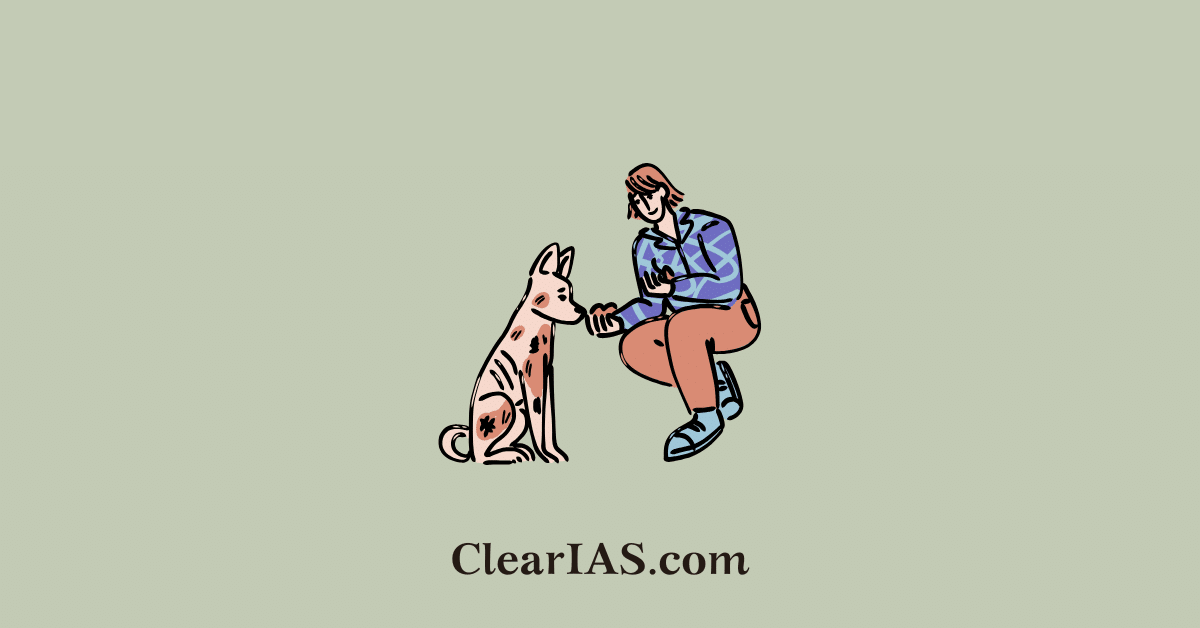
India is home to one of the world’s largest stray dog populations, with the 2019 Livestock Census placing the figure at 1.5 crore. The issue is no longer confined to being a matter of animal welfare but has emerged as a pressing public health and urban governance challenge. Read here to learn more.
The Supreme Court’s Suo motu directive on August 11, 2025, ordering the removal and permanent sheltering of stray dogs from the streets of Delhi-NCR, highlights the urgency.
The National Capital Region has witnessed a sharp rise in dog bite incidents, over 35,000 cases between January and June 2025, and growing concerns over rabies, a disease with near-100% fatality once symptoms appear.
Stray Dogs Management in India
- Human-Dog Conflict: Over 37 lakh dog bite cases reported nationwide in 2024 (NCDC).
- Mortality and Morbidity: NCRB data show 4,146 dog-bite-related deaths in 2019.
- Economic Burden: Post-exposure prophylaxis (PEP) for rabies costs an average of ₹5,128 per case, placing a strain on households and public healthcare budgets.
- Urban-Rural Dynamics: Higher incidence in urban/semi-urban fringes due to unplanned waste disposal, poor sterilisation coverage, and pet abandonment.
Legal and Policy Framework
- Constitutional Provisions:
- Article 243W: Empowers municipalities for the prevention of cruelty to animals.
- Article 51A(g): Fundamental duty of citizens to show compassion towards all living creatures.
- Key Legislation:
- Prevention of Cruelty to Animals (PCA) Act, 1960.
- Animal Birth Control (ABC) Rules, 2023: Mandates sterilisation, anti-rabies vaccination, and regulated feeding zones for community dogs.
- Judicial Guidance:
- Animal Welfare Board of India v. A. Nagaraja (2014 Jallikattu case): Article 21’s right to life extended to animals.
- Ongoing Supreme Court observations stress balancing human safety and animal rights.
Stray Dogs Management: Perspectives
Residents
- Concerns: Safety of children/elderly, property damage, and rabies risks.
- Divisions: Some favour humane feeding and care; others advocate removal or culling.
Animal Welfare Organisations
- Approach: Promote sterilisation, vaccination, feeding regulation, and adoption.
- Opposition: Strongly against mass culling, citing ethical and scientific grounds (vacuum effect).
Government Agencies
- Municipal bodies: Primary responsibility for the implementation of ABC programmes.
- NCDC & MoHFW: Lead agencies under the National Action Plan for Dog-Mediated Rabies Elimination (NAPRE) by 2030.
- State Veterinary Departments: Operationalise sterilisation and vaccination drives.
Pet Owners
- Abandonment of pets contributes significantly to the stray population.
- Advocacy for stricter pet licensing and responsible ownership.
Ethical Dimensions
- Utilitarianism: Supports strategies that minimise total suffering-e.g., sterilisation with safe removal from high-conflict areas.
- Deontology: Emphasises inherent rights of animals and moral duties of humans irrespective of outcomes.
- Virtue Ethics: Encourages compassion, responsibility, and prudence in decision-making.
Global and Scientific Insights
- Netherlands: Zero stray dogs achieved via compulsory registration, spay-neuter drives, and strict anti-abandonment laws.
- Bhutan & Thailand: Long-term Catch-Neuter-Vaccinate-Release (CNVR) programmes reduced stray numbers and rabies incidence.
- Vacuum Effect: Removal without habitat management or sterilisation often leads to rapid repopulation from surrounding areas.
Technology and Innovation
- GPS-Enabled Dog Tagging: Tracking sterilisation and vaccination status.
- Mobile Apps: For bite reporting, adoption facilitation, and stray monitoring.
- Data Analytics: Mapping hotspots for targeted interventions.
Way Forward
- Integrated Policy Approach: Harmonise animal welfare, public health, and urban planning policies.
- Strengthen ABC Programmes: Achieve high sterilisation coverage (>80%) in targeted zones for stray dogs.
- Waste Management Reform: Reduce food availability from garbage dumps.
- Community Engagement: RWA-led feeding zones linked with sterilisation and vaccination.
- Legislative Strengthening: Enforce anti-abandonment laws and pet registration.
- Funding Models: Explore CSR, public-private partnerships, and municipal bonds for programme financing.
Conclusion
The stray dog challenge in India sits at the intersection of public health, animal rights, and urban governance.
The Supreme Court’s 2025 directive signals a shift toward decisive intervention, but sustainable results will depend on scientifically designed, ethically sound, and community-supported strategies.
Balancing compassion for animals with citizens’ right to safety will require long-term planning, inter-agency coordination, and continuous public engagement, ensuring that humane methods and public safety are not competing goals but complementary priorities.
Related articles:







Leave a Reply